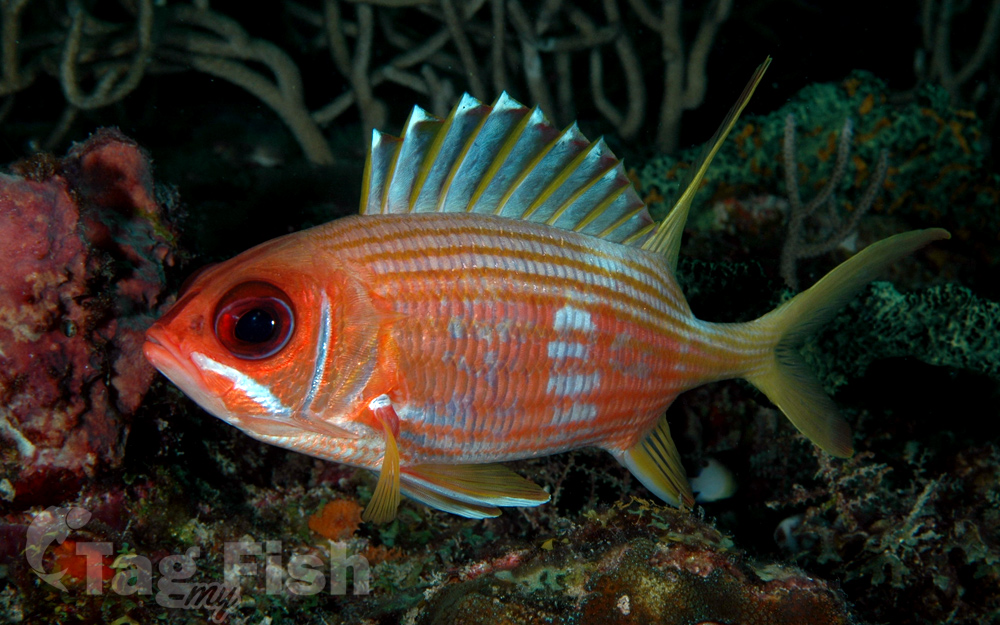Longspine squirrelfish
(Holocentrus rufus)

Classification
General data
The longspine squirrelfish (Holocentrus rufus) is a silvery red, sea fish with orange-gold body stripes. One of about 150 species of squirrelfish, their most distinguishing characteristics are their large eyes and the long third spine of the anal fin. It is often included in public aquarium displays. The length of the longspine squirrelfish is about 18 cm (7.8 inches).
It lives in coral reefs in tropical and warm temperate seas and eats zoobenthos. It is territorial and uses sounds called grunts and staccatos to defend its crevice, warn of danger and, in groups, intimidate predators such as the moray eel. The longspine squirrelfish is edible and harvested on a small scale.
Identification
The body of the longspine squirrelfish is silvery red, with orange-gold body stripes. Its eyes are very large, which is characteristic of all squirrelfish. The rear dorsal fin is pronounced and sticks up. The anal fin has a strongly elongated third spine, from which this squirrelfish gets its name.
Distribution
Longspine squirrelfish are marine fish that live in coral reefs. The length of the longspine squirrelfish is up to 18 cm (7.8 inches). They are found along the south eastern coast of the United States to Northern South America and Brazil, as well as in-between locations such as Bermuda and the West Indies. They hide in or near dark recesses. They are territorial and defend their crevices with visual and acoustic displays. They are rare on shallow reefs. They are more abundant with increasing depth and are most abundant between thirty and seventy meters.
The juveniles are thin, silvery pelagics and seldom seen.










